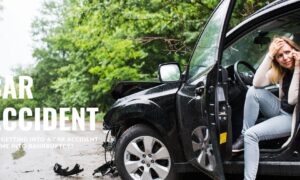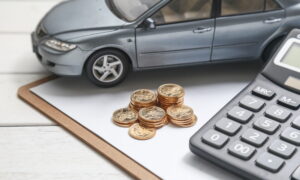Crash! You never think it’ll happen to you until it does. But car crashes are more common than you think. Your chances of getting into a car accident are 1 in 366 for every 1,000 miles you drive.
When you’re in that situation, your emotions run high and it’s easy to get overwhelmed with all the adrenaline and stress.
That’s why drivers should learn what to do in a car crash long before they ever get in one. That way, you can respond in a calm and orderly way without making costly oversights or mistakes.
So let’s go over the best way to react to a car accident:
1. Stay calm
First, don’t panic. It’s important to stay calm in a car crash situation to avoid unnecessary danger and conflict with the other driver. Just take a deep breath and take note of your surroundings.
2. Make sure everyone is okay
Next, make sure everyone is okay. Check for injuries and provide first aid if necessary. If the injuries or car damage are serious, call 911. And even if not, you may want to call the police just to get an official report on file.
3. Move to a safe area
As soon as you’ve made sure everyone is okay, try to move your car off the road. That way, you don’t obstruct traffic. Turn on your hazard lights and put up an emergency triangle or set off emergency roadside flares if you have them.
4. Exchange contact information
At this point, you’ll want to exchange contact information with the other driver. Though the laws vary by state, you’re generally only required to give your name and insurance information, which includes the insurance company name, phone number, and policy number.
You can exchange more than that if you’d like. You can discuss what happened, but avoid admitting any fault for the crash. This could hurt you later on when settling the insurance claims.
5. Document the crash
Take photos of the accident scene. Make sure to get shots of any damage to the vehicles or any injuries.
Make notes. You can type them on your phone or make a voice recording. There are even some apps that tell you exactly what to document. But if you can’t use a phone, just use a regular pen and paper.
Detail how fast and in what direction both cars were traveling immediately before, during, and after the crash. Record which parts of the vehicles were hit and what kind of damage was incurred. If possible, get a third-party witness to record an account as well.
6. Check what car insurance coverage is available
Insurance coverage will vary depending on who is at fault and what types of policies each party has:
- If the other driver is at fault, you can typically expect their insurance to cover damage to your car and any medical bills and expenses you incur up to the policy’s limit.
- If you have uninsured or underinsured coverage, it will cover anything the other driver’s insurance won’t.
- If you have personal injury protection (PIP) coverage, then this will also cover your expenses—no matter who is at fault.
Whatever you do, don’t accept a quick settlement. In other words, don’t allow the other driver to compensate you with cash in order to not involve insurance. You rarely know how much damage there is at the outset.
7. Contact your car insurance company
Now that you have an idea of what can be covered, contact your car insurance company. They’ll help you file an insurance claim. Let them know all the details of the accident that you documented. This is a crucial step and the sooner you start the claim process, the better.
8. Consult a lawyer
Unfortunately, insurance companies don’t always have your best interest in mind. Sometimes they want to pay you the least amount possible. So it’s important to also consult a personal injury lawyer. They can help protect you and your rights and ensure you get the full compensation you deserve.
9. Get medical attention
Of course, get the medical attention you need. Depending on the injury, you may need to go to the ER, a primary physician, or a chiropractor.
In any case, keep any documents related to your healthcare in a safe place. These will help prove the amount of harm you suffered as a result of the accident.
Final Thoughts
Hopefully, you’ll never find yourself in a car crash. But if you do, you at least now know how to respond. Just remember to stay calm and refer back to this list if you need to.



































